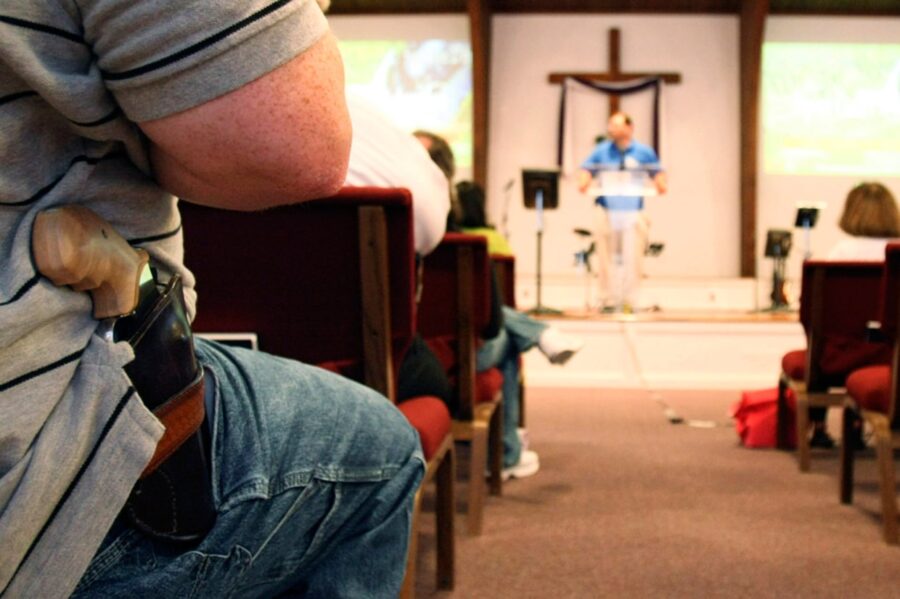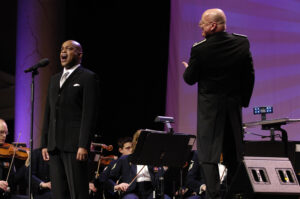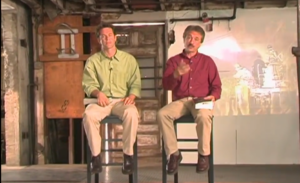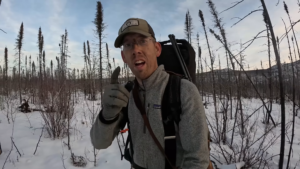It’s another sad day in America. A week ago, a Christian school was shot up, leaving six dead. Yesterday we reported another disturbed trans man was planning to shoot up a church, leaving a terror in his wake.
Violence in church is really nothing new. In fact, about 10 percent of all mass shootings happen in church or on church-owned grounds.
Statistics (from 1999 to February of 2015) report 971 “deadly force incidents” in churches or faith-based operations. Of those, only about 200 incidents are from people who knew each other (friends or relatives) committing violence against each other. The rest are “outside-in” incidents. Approximately 47 of these incidents were religion-based (so called “hate crimes”). 576 incidents included firearms. Of these incidents, 375 occurred during “service” hours and the rest during off-hours [link for info].
These incidents have been on the rise in America, beginning in 1980 when a gunman shouted, “This is war!” and began to shoot up First Baptist Church in Dangerfield, Texas – killing five and wounding ten more. Since then, on-grounds church violence has been a normal occurrence, although it doesn’t make the international news in the same way as this seemingly race-motivated murder spree yesterday.
Facing the reality that church “sanctuaries” are apparently in name only and churches are as vulnerable to violence as any other public place (more vulnerable in states that prohibit conceal and/or open carry in houses of worship), pastors, elders, bishops and overseers must consider how to make church gatherings as safe as possible.
What can be done to help prevent violent people from succeeding in their efforts to carry out mass-violence in your congregation?
1. Watch Faith Under Fire, directed by Sondra Hicks. The story chronicles the first mass church shooting in the U.S. – 30 years after the attack. You can see the trailer here and watch it here.
The video is raw, cutting, and spits reality. Pastors, in particular, need to watch this. What would it be like for your church to get shot up? Think about it. Then do something about it.
2. Create a church security team. Enlist current and former law-enforcement, current or former military personnel, or other naturally-observant people with a penchant for self-awareness. Some people are naturally prone to watching out for themselves and others. I call them “sheepdogs.” They’re naturally alert. They’re intuitively thinking about safety. They see trouble coming before almost anyone. Enlist them. They don’t need matching t-shirts or badges. My “security team” is a rather informal bunch comprising of former/current law enforcement and military, a former bar bouncer, and a few cattle-wrangling deacons. They can handle themselves and stay alert, and that’s good enough.
3. Create a risk assessment. Your security team needs to look at each avenue for entry into the church and take things into consideration:
- Are there unprotected entryways into the church, unstaffed by any greeters?
- Are all doors open just because they can be? Or are certain doors locked to limit access and filter people through carefully selected entry ways so they can be more easily observed for trouble?
- Are your greeters – the front line of defense – able to stop an assailant? Can they get “physical” if they need to? Are they or could they be discreetly armed? Your greeters need to be friendly and hospitable, and also need to be able to take someone to the ground if they have to. Likewise, your ushers inside the sanctuary need to be smiling, unofficial, security guards.
- Who is on duty to observe guests for strange behavior and the regular visual cues that something is “not right”? Is there always someone who’s in charge of observation?
- Are there men in the congregation who know that they’re the ones to head towards the attacker instead of away from an attacker? These men are the church’s equivalent of airline passengers chosen to sit in the exit row of the airplane in the case of emergency. These men sit on the outside of the pew or row instead of on the inside, so that they can move quickly.
- Often neglected, in the age of improvised explosive devices (yes, I realize this seems far-fetched) – not to mention property damage, petty theft and vandalism, is someone watching the church parking lot as well?
- Are there certain, well-trained individuals that you’ve asked to never be at church without a firearm? In the typical “redneck” church, knowing who does and does not have a weapon may be a gamble, but there should be some that you can count on being armed. Know who they are.
4. Have a protocol in case the violence ensues.
- Without giving away our own operational security (OpSec), each classroom in our meeting house has a paper attached by the door with instructions specific to the emergency (violence, missing child, etc…). Make sure teachers/instructors are familiar with that.
- Be able to communicate between church leaders and between security personnel. In most churches, shouting from entry to entry or down corridors will suffice. If a larger building, perhaps two-way radios should be purchased to allow for quick reaction.
- As stated above, designated security personnel should know that while others run away from the epicenter of violence, they are to be running toward it. Certain security personnel should also be running toward the exits with their “sheep,” making sure that the outside perimeters are free of danger (remember the Jonesboro school shooting, where the real danger was lurking outside, rather than inside, the building).
- Give the security team permission to escort any person off of the property for any reason (whether it seems reasonable or not). God gives instincts and “gut feelings” for a reason. If a guest is setting off someone’s proverbial spidey-senses, it is perfectly acceptable to speak privately to the individual, explain that there is something unsettling about their presence, and set up a meeting to speak privately to church staff on another day. The church may be a public gathering, but is private property. We have had to do this before and the phrase we used was, “This is not a good day for you to be here.” As sad as it is to be unnecessarily inhospitable because someone is acting strangely, but how much sadder would it be if he took a sawed off shotgun out of his coat and began to shoot your church children? Pastors, let your security team know that you will not be mad at them if they have to make that call.
- This one may be controversial – have a zero-tolerance policy for (alcohol or drug) intoxication. “Drunks need to be in church,” I can hear people say now. Yes, but let me tell you something from experience – if they’re drunk, they won’t remember what you said anyway. Having an inebriated person in the church does no good for that individual. They need to sober up and hear the Gospel, but hear it sober. Most mass shootings (like, the overwhelming percentage) are done by those on psychotropic drugs. Whether drunk, high, or “out of it,” cue in to the pupils and signs of intoxication and cordially invite people to come back when they’re not on something (most people will apologize and be too embarrassed to get angry). If you don’t want to confront a drunk or “high” person because they may get violent, is it better to let the violent person remain sitting among your wife and children?
- There needs to be recognized and understood visual cues between the pastor and security team. From the pastor’s perspective (facing the congregation while preaching) he may see trouble long before anyone else. The pastor needs to have a recognizable gesture (as simple as a look and nod in someone’s direction to indicate suspicious behavior or possible danger) and the security team needs to be aware of that gesture, what it means, and act appropriately.
5. Security starts with families.
- Dads and husbands need to sit on the outside of the pews so that they can be quick for action (this isn’t just for church, but ballgames, rodeos, concerts, or any other public gathering).
- Dads need to be armed. This doesn’t mean carrying a firearm, necessarily, but there are a wide-array of less-lethal or less-obvious weapons that can be carried in your pocket. Have something to clock somebody and incapacitate them from hurting the people you love.
- When the violence commences, your children must be taught to run away from their father and toward their mother (or in the absence of their mother, away from their father and toward cover – not concealment, but cover). When “it” goes down, dads don’t need to pry their children off from around their legs to act. Children must be taught that they run toward mom or cover, and away from dad so that dad can act. This will be contrary to their nature, so this training should be repeated.
For a bit of inspiration, I leave you with this quotation from The Patriot…
A shepherd must tend his flock, and at times…fight off the wolves.
This article was written by JD Hall in 2015 and originally posted at Pulpit & Pen. Adapted by Protestia.













5 responses to “Op-Ed: Protecting Your Church Against Mass Violence”
As the largest (non-alphabet/gender-affirming) church in our state, it is often a target of threats. We have implemented pretty much all of these excellent above points and even have promoted CCW training for congregants.
Every service at every campus is salted with armed, plain-clothes present or past law enforcement – and a very visible uniformed police presence is outside. It’s a shame that so much money and manpower have to be expended to protect God-fearing families.
We know the disciples carried their swords. But I believe they were also well-practiced and highly-skilled. I believe when Peter took off the soldier’s ear, that was exactly his intent. I believe he was highly-skilled with his sword, and he hit exactly what he was aiming for. So not only arm yourselves, but practice and become proficient with your weapons.
My only caution is whatever you do, be careful that you do not sin. Sometimes that emotional “spidey sense” will lead you wrong, particularly if it is informed by the world’s standards rather than Biblical standards, in terms of what constitutes suspicious behavior. It can lead you to bear false witness. There’s a very fine line. You can’t be so pro-active and preemptive that you end up in the realm of guilty-till-proven-innocent. At that point, you’ve crossed the line into sin. You can be as prepared as possible, for every scenario imaginable, but perfect safety and security is something that only the Lord can provide. No matter what precautionary measures you take, a good measure of faith is still required.
False accusation is a serious sin. You have to be very careful what you do. If in your heart you falsely accuse someone and kick them out of the church based on that wrong suspicion, then by God’s law (Duet. 19:15-21), you deserve the same penalty you imposed on them, and should rightfully be kicked out of the church yourself.
That is the reason we arm ourselves and work to become proficient, in the first place, in order to focus more on defensive approach rather than an offensive, proactive, preemptive approach. Because we very often couldn’t be preemptive without sinning. It takes faith.
[…] To read more, click here: https://protestia.com/2023/04/08/op-ed-protecting-your-church-against-mass-violence/ […]
[…] long covered the need for churches to employ armed congregants as part of a church security plan, given that 10% […]